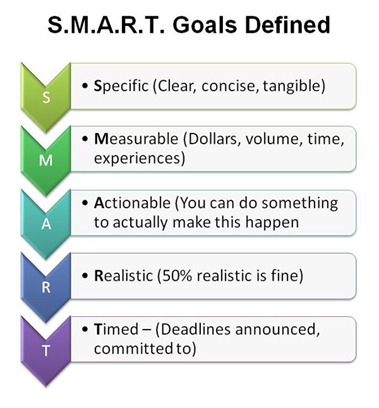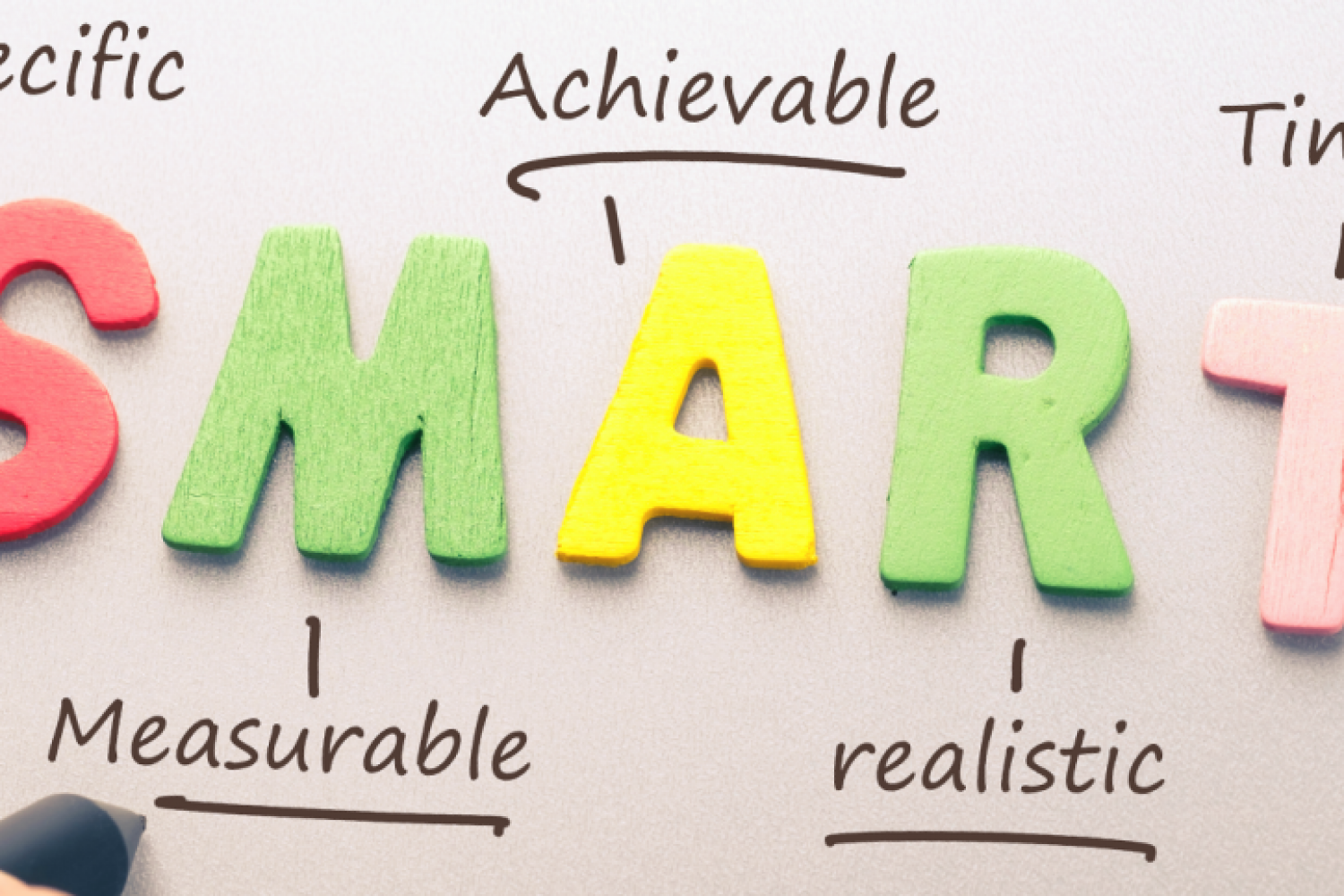The secret to alleviating common personal and work challenges is to set specific goals. SMART goals.
What are SMART goals?
You can attain most any goal you set when you plan your steps wisely and establish a time frame that allows you to carry out those steps. Goals that may have seemed far away and out of reach eventually move closer and become attainable, not because your goals shrink, but because you grow and expand to match them.
When you list your goals, you build your self-image. You see yourself as worthy of these goals, and develop the traits and personality that allow you to possess them.
- Goals should be Specific.
- Goals should be Measurable. Have a yardstick for measuring outcomes.
- Goals should be Attainable. Draft realistic goals that challenge you.
- Goals should be Relevant. Make sure each goal is consistent with other goals you have established and fits with your immediate and long-range plans.
- Goals should be Time bound. Give yourself time to achieve your goals.
- Basically, your goals should be SMART.

Setting SMART goals means you can clarify your ideas, focus your efforts, use your time and resources productively, and increase your chances of achieving what you want in life.
Specific – A specific goal has a much greater chance of being accomplished than a general goal. To set a specific goal you must answer the six “W” questions:
- *Who: Who is involved?
- *What: What do I want to accomplish?
- *Where: Identify a location.
- *When: Establish a time frame.
- *Which: Identify requirements and constraints. *Why: Specific reasons, purpose or benefits of accomplishing the goal.

Measurable – Establish concrete criteria for measuring progress toward the attainment of each goal you set. To determine if your goal is measurable, ask questions such as……How much? How many? How will I know when it is accomplished?
Attainable – When you identify goals that are most important to you, you begin to figure out ways you can make them come true. You develop the attitudes, abilities, skills, and financial capacity to reach them.
Realistic – To be realistic, a goal must represent an objective toward which you are both willing and able to work. A goal can be both high and realistic; you are the only one who can decide just how high your goal should be. Your goal is probably realistic if you truly believe that it can be accomplished.
Time Bound – A goal must have a target date. If you desire to make a million dollars, but don’t set the timeline for it, it won’t be motivating. A deadline too far in the future is too easily put off. A goal that’s set too close is not only unrealistic, it’s discouraging.
Long Term Goals: long term goals are simply a description of what you want for yourself in the future — say about 3 to 5 years out. The best way to define them is to give examples: graduate college, get a good job, find a life partner, get rich quick, etc…
A goal is not a plan, it’s more like a wish list with (hopefully) a basis in reality.
Then set short term goals to reach that plan.
- What can I do 6 months from now?
- What can I do 6 weeks from now?
- What can I do today?
Apply This
When it comes to writing S.M.A.R.T. goals, be prepared to ask yourself a lot of questions. The answers will help fine-tune your strategy, ensuring the goals are something that’s actually attainable.
Perhaps you’ve always dreamed of traveling around the world, but it’s never happened. Maybe you tell yourself it’s because you don’t have the time or the money, and you’ll think about it next year.
Try setting SMART goals to help make your travel plans specific, measurable, achievable, relevant, and time bound. You might find that the real reason you haven’t traveled is because your plans have been too vague or unrealistic. Think about how you can adjust your vision and rephrase it as a SMART goal, so that you can make your dream come true.
So in conclusion, setting SMART goals is an art, but it can be mastered. All you need is a little practice. Start setting, and good luck.
Zee
Recommended Reading: 5 Nigerian Startups worth noticing in 2019
Also read Paul J. Meyer’s “Attitude Is Everything.”










